In Search of Christopher Maclaine 2: The THE END Tour - A Work in Progress 1
This is the second in a multipart series unofficially conjoined to the publication of Radical Light: Alternative Film & Video in the San Francisco Bay Area, 1945–2000, and the accompanying film series currently being presented by the Pacific Film Archive and San Francisco Cinematheque (in partnership with SFMOMA). Tonight’s show at the PFA features a semi-rare screening of Christopher Maclaine’s THE END, the exciting appearance of David Meltzer, and an incredibly rare visit by Wilder Bentley II, who in 1953 played PAUL, the 4th of THE END’s 5 major characters.
With my friend Brian Darr, proprietor of the great Bay Area cinephilia blog Hell on Frisco Bay, I’ve been scouting out the San Francisco locations used in Christopher Maclaine’s first (and arguably greatest) masterpiece, THE END. The results of this quest will be revealed over the next many weeks, starting with the very post you are currently reading. What began as an attempt to identify and document what physically remains of the places at which THE END was shot, has, however, evolved into a larger project to also analyze the film and its long-term covert cultural impact, and to identify all its many actors and extras (all of whom appear uncredited). At the beginning of our research, only two of the actors’ names were known to us, including that of Christopher Maclaine himself. After much searching, we were finally able to make contact with the other, and still very much extant, identified member of the cast, Wilder Bentley II (also known variously as Wilder Bentley the Younger, and Wilder Bentley, Jr.), who identified several of THE END’s other cast members for us. Still, many of the film’s personages remain elusive. As THE END was made circa 1953, and much of its cast was in their 20s, it’s quite likely that many more are still with us, could be identified, and could themselves participate in the unearthing of further details. This is very much a project, therefore, on which YOU, dear reader, could have an impact, but BEWARE — although the numbers belonging to the cult of THE END are quite low, those for whom it strikes a chord have often found themselves obsessed. You, too, could find yourself devoting countless hours to exploring its minutiae, and contemplating its subtleties and genius… For me, this time has been infinitely rewarding, and I urge everyone in the Bay Area arts community, and elsewhere, to join in. I will credit anyone who is able to contribute (if so desired), and will update these posts as soon as new info is confirmed. The Tour, of necessity, supplies a digest of the film’s narrative (including many stills from its color and b&w images, and quotations from Maclaine’s voice-over narration on its soundtrack), as well as functioning as a critical and archeological project, but by all means acquaint yourself with the work itself! A poor video copy of the first 10 of THE END’s 35 minutes is viewable via this YouTube, and a superb video transfer of the entire film is available as part of the fantastic 2-DVD Treasures IV: American Avant-Garde Film, 1947–1986 set. Those who want to see the REAL THING but aren’t able to make tonight’s show can rent a print from the Filmmaker’s Cooperative (currently only 72 bucks! my God, what a steal!). Readers wishing further information regarding Maclaine may check out the intro to this series. But enough for now — let the Tour commence! …
NEW FEATURE: a Youtube of THE END‘s opening sequence is viewable here.
We make our way into THE END’s labyrinth via a rundown of many of its significant shots, beginning with the first of the film proper. The sound of an (oncoming?) speeding train has accompanied the film’s brief credits, and continues over shot #1:
1) A stock-footage (still?) image: the mushroom cloud of an exploded nuclear bomb.
2) The first view of the first of THE END’s characters, WALTER, shot facing west towards the grand four-tier south central stairway of San Francisco’s Alta Plaza Park (near the intersection of Clay and Pierce streets), staged on the second tier from the bottom. At this point, Walter is a mere speck in the distance as he rapidly descends stairs.
3) Previous shot continued. Walter (actor currently unidentified) storms into closer view. As he approaches, sound of train fades out, and one of the film’s musical themes fades in on soundtrack: an unidentified piece for a very small orchestra of bagpipe and strings. It’s possible, unlikely as it might seem, given THE END’s no doubt minuscule budget, that this piece was composed and recorded specifically for the film. According to Stan Brakhage, Maclaine was highly proud of his Scottish heritage, played the bagpipes “beautifully,” and was the creator of the “bagpipe music in some of his films.” The ecstatic music of the pipes will feature sporadically throughout THE END, and much of the rest of Maclaine’s film work, and the instrument itself will appear in his later films BEAT and SCOTCH HOP.
2A) A photo taken 3/4/10 from approximately the same position as shot 2-3.
4) THE END’s opening title: white lettering attached to an invisible glass pane, suspended over paper or cardboard (?) with a primary school notebook cover-type pattern.
5) We cut to black, and music fades out. We hear the sound of a triangle being rung, then the first of several monologues by Maclaine delivered over black leader, and punctuated regularly by the ringing triangle:
Ladies and gentlemen, brothers and sisters … soon we shall meet the cast … Observe them well. See if they are not yourselves, and if you find none of them to be so, then insert yourself into this revue, for such it is — a revue of things human, a view of things past. A vision of a world no longer in existence, a city among cities gone down in fire … For the world will no longer exist after this day … The cast: these are some of my friends — I knew them well. They all have stories. We shall be able to learn a little about each of them before our time runs out. These people have lives they are all immersed in, but we see that they’d best lie down, and make themselves as peaceful as possible, if they only knew … But they do not know … They do not know that it is to be today … Next year, they think. Next week, tomorrow … Later … But it is later than they think. They should not make life so complicated for themselves, now that they have brought about their own destruction. But they cannot avoid the complexities, for death is their only alternative. Enough for now. Let us visit our first friend on his last day …
After this introductory monologue winds down, Maclaine treats us to a semi-furious montage in which all of the film’s as-yet-unseen major characters are briefly glimpsed, to the accompaniment of a second unidentified recurring musical theme, which sounds to my ear produced by harpsichord, violin, and oboe, perhaps? (Help us out here, musical people — you can hear this piece on the YouTube.) The following stills represent many, but not all, of the montage’s images:
6) JOHN (actor currently unidentified), a poet/comedian who will prove to be the third of THE END’s major characters, characteristically clutching a revolver to his head, as he (perhaps) recites from his oeuvre to an unseen audience.
7) An unnamed character Brian and I have taken to calling “DANCER.” The actor playing Dancer has been identified as Stanley Willis by Wilder Bentley II.
8 ) Our first view of Chris Maclaine himself, playing major character #5, identified only as “A CHARACTER.”
9) A character Brian and I refer to as “SHADES.” The actress playing Shades has been identified as Jane Conger Belson Shimane by Wilder Bentley II.
10) A close-up of Chris’s hands bent on destruction. Note the deeply saturated red of his shirt. THE END’s color shots were photographed in glorious Kodachrome reversal, the only color film ever made not known to fade. Kodak, in its infinite wisdom, discontinued production of Kodachrome in 2009, and if you have any unshot or unprocessed rolls, hurry up! Processing will cease at the end of this year — just three short months away!
11) San Francisco’s Palace of Fine Arts, a recurring location in THE END, about which there’ll be more to say in later posts.
12) A display of white and black dancing dolls by a street vendor/performer (?). These inflatable plastic dolls, manipulated by strings, will be a recurring image in THE END, as a similar pair also were, if I’m not mistaken, in Ralph Ellison’s Invisible Man, published in 1952, the year before THE END’s 1953 premiere at the San Francisco Museum of Art.
13) An unnamed character (played by an unidentified actress) Brian and I refer to as, alternatively, PIPEWOMAN or PIPEGIRL, for reasons which will become clear later.
14) Pipegirl, and her consort, whom Brian and I call MATCHMAN, are the sixth and seventh of THE END’s major characters. Usually, the film’s “cast” is referred to containing five of these, but Pipegirl and Matchman, although unnamed and undiscussed by Maclaine in his role as the film’s narrator, will be seen to be every bit as important — and arguably more so — as any of THE END’s “official” characters.
15) CHARLES, the second of THE END’s major characters, who takes center stage starting with the fourth post in this series. The actor playing Charles has been identified by Wilder Bentley II as Darryl Solari.
16) A knife, having flown through the air, hits its target. Knife-throwing, according to Stan Brakhage, was one of Maclaine’s obsessive hobbies. It will play an element in section 5 of THE END, which is devoted to the character played by Maclaine himself.
17) This “expired” San Francisco parking meter is another of THE END’s recurring images, most closely associated with Walter, but redolent of the film’s view of humanity and the earth, which is arguably one of the earliest forerunners to contemporary culture’s culture of fear regarding potential environmental collapse.
18) PAUL, the fourth member of THE END’s “cast,” and the subject of later posts in this Tour. The actor playing Paul to our knowledge was first identified in print (in Film Culture #70–71, 1983) by J. J. Murphy as Wilder Bentley, Jr. This image was photographed 57 years ago, when Wilder was around 25. Come see him tonight at the PFA at the age of 82! Wilder’s quite the lively character …
We have ridden the whirlwind, and by the conclusion of this montage, the viewer is most likely excited and disoriented, and ready to enter the first of THE END’s stories.
Click as indicated for the first post dedicated to WALTER!
Click as indicated for the intro to this series.
If you have any information or (nonpublic) feedback to contribute to the Tour, please click here.

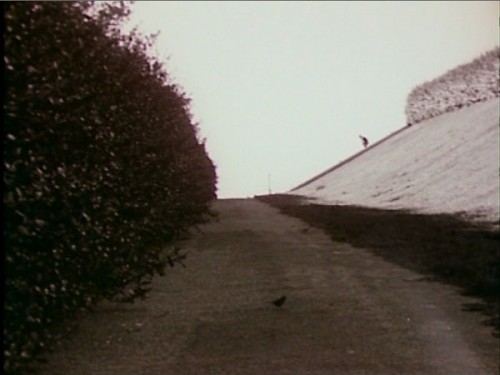
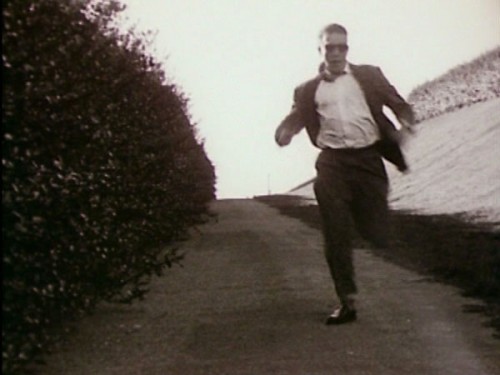
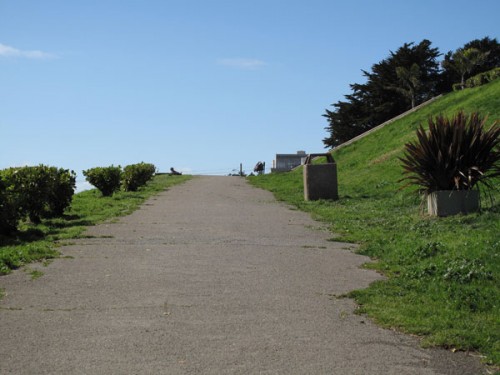
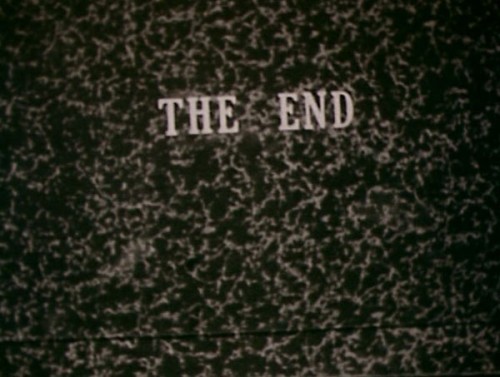

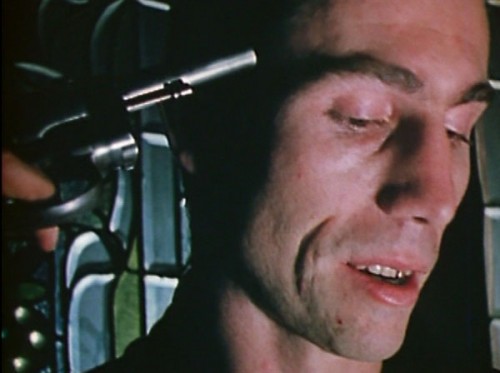
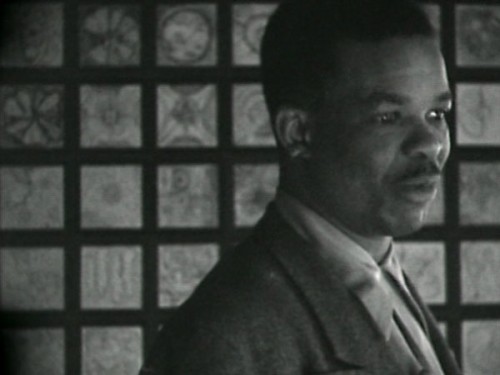
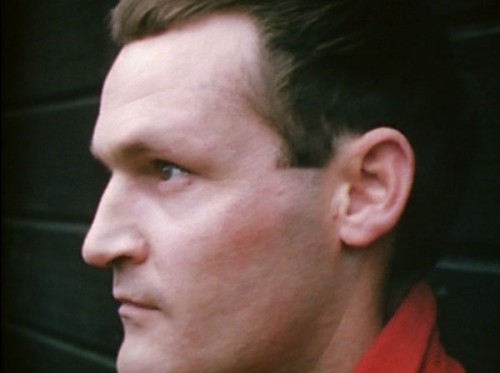
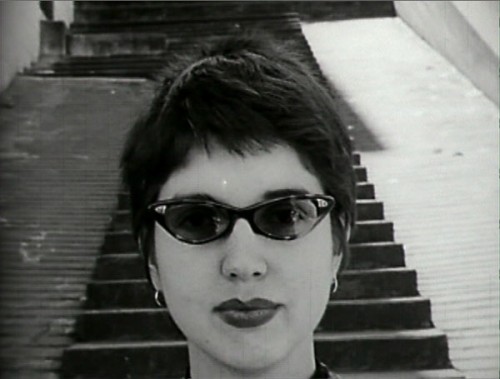
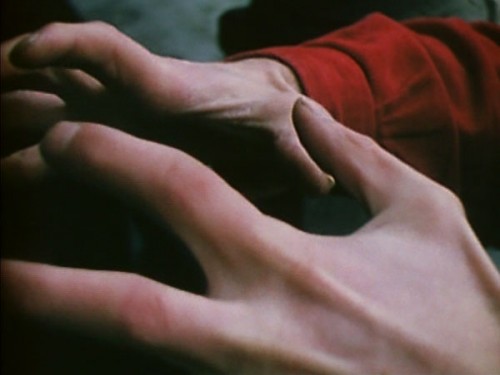
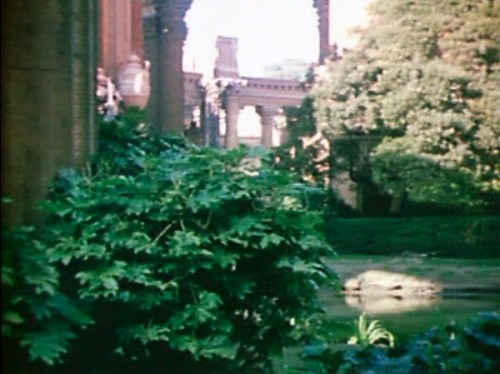
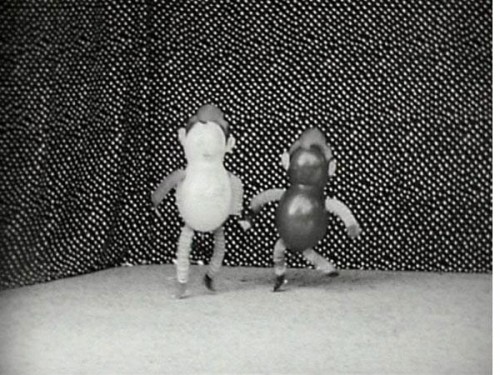
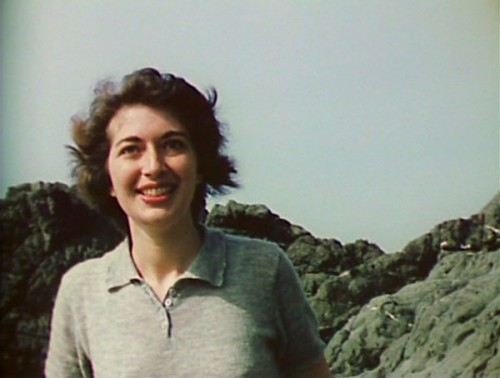
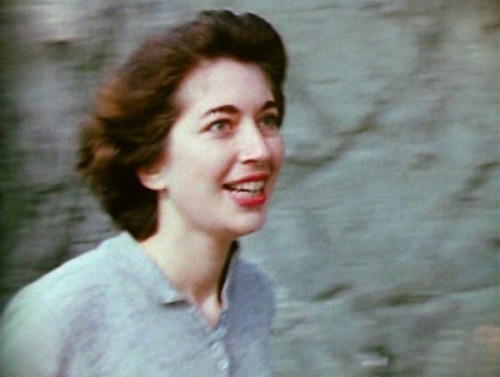
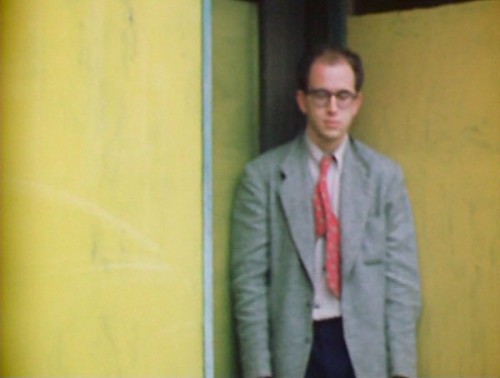
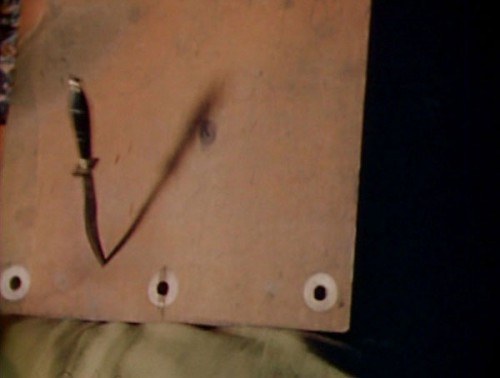
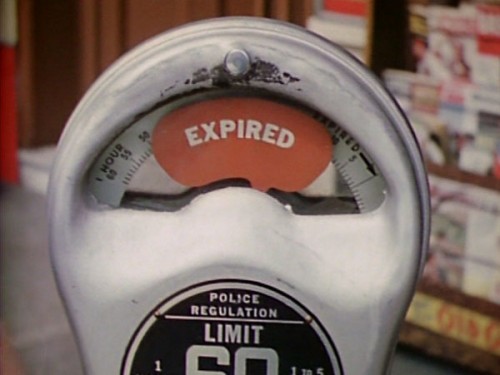
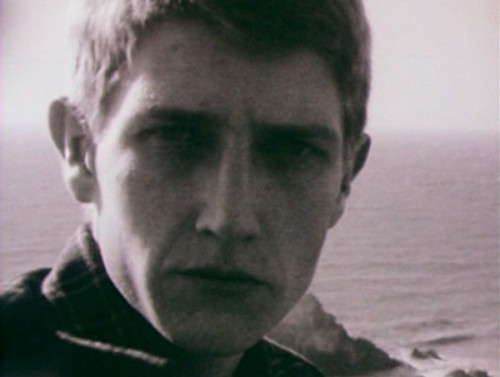
Comments (11)
-
Brecht Andersch says:
March 26, 2014 at 6:41 am
-
Erik Ulman says:
March 21, 2014 at 8:32 pm
-
Brecht Andersch says:
October 1, 2010 at 1:39 pm
-
konrad says:
October 1, 2010 at 12:42 pm
-
Brecht Andersch says:
October 1, 2010 at 1:17 am
-
konrad says:
September 30, 2010 at 11:18 pm
-
Brecht Andersch says:
September 30, 2010 at 6:51 pm
-
Brian Darr says:
September 30, 2010 at 2:11 pm
-
Brecht Andersch says:
September 30, 2010 at 12:54 pm
-
konrad says:
September 30, 2010 at 9:48 am
-
Timoleon Wilkins says:
September 29, 2010 at 11:00 am
See all responses (11)Many thanks for this contribution to the TOUR, Erik! I’ve waited many years to know the provenance of this piece, and had heard of de Falla, but as far as I know had never heard any of his music, aside from on THE END‘s soundtrack. It greatly contributes to the frenetic, somewhat deranged atmosphere of this section of the film. Thanks again for this info; I’ll be adding it to the main body of this post shortly.
Thanks so much for this extremely useful and informative site: wonderful to dig deeper with you into this great and inexhaustible film, and into the history of this city… I’m glad that I can contribute one identification: the music in the first segment is Manuel de Falla’s Concerto for Harpsichord and Five Instruments (visit
https://www.youtube.com/watch?v=SLm-Tvb_F0Q
for a recording)…
Thanks again, and all best wishes…
There is much to say about Charles and the causes of his violence, konrad, but I think I’ll wait to say more at the appropriate point. As fellow devotees of THE END, I’m sure there’ll be much to both agree on and debate.
It’s been many years since I’ve seen ON THE BEACH, but now that you mention it, that line does seem like typical Kramer naivete. I’ll give you the “reckless leaders” if it includes the minor players, such as Keenan Wynn’s Colonel “Bat” Guano and Slim Pickens’ Major “King” Kong, tho generally speaking, Kubrick doesn’t let anyone off the hook: the evil is inside us. It may need a Sgt. Hartman (!) to activate it, but it couldn’t be activated unless it was already there.
But enough with these others — let’s get back to Maclaine! The first WALTER segment will be posted very late Sun night — I look forward to your response!
Ah, i forgot about Charles. But all i can say in my defense is that he certainly comes across as a nebbish on camera, and hardly as a murderer. I think the “for reasons we know nothing about” is meant to suggest that we shouldn’t judge the violence, but the cause.
It’s true, some of their actions should be called violent. I think all i want to say, and we might just agree on this, is that any violence is a result of that underlying panicky hopelessness. And bc of that, yes, i agree definitely Ray and Maclaine were on the same track! Both self destructive, too, as you write.
Oh, and, re: “people are innocent,” that came from some of the lines given characters in ON THE BEACH, who protest that the destruction of the world isn’t fair, because they didn’t do anything. The reference to Kubrick was “reckless leaders.”
Apparently we’ve had a misunderstanding, konrad — I certainly don’t think of THE END‘s protagonists as types “who would carry on a 1950s-style cold war of brinksmanship”. I identify with them myself (more or less, depending on the character), and don’t mean to portray them as simple macho thugs on any level. I was referencing Maclaine’s lines immediately before the Paul episode: “You have not seen yourself, you say. These people are all violent and suicidal. You are none of these. And yet you sit there quietly, awaiting the grand suicide of the human race”. Sorry if this was too subtle. One might also ask if you don’t think any of the protagonists can be described as violent, how do you account for Charles, who “for reasons we know nothing about”, “had just murdered his landlady, and her seven-year-old daughter”? Then again, the suicidal behavior exhibited by the characters certainly qualifies as violence, even if only directed at self. Also — there’s Chris himself, who in the film repeatedly throws knives, and as the last character discussed by the voice-over, is described thusly: “He is a good boy, but somehow we feel that he is up to no good… Why is he going into the house? Now he will enter and destroy, perhaps?” I’d assert these characters do have traits which could be described as violent, but certainly don’t believe their violence defines them (accept in the case, perhaps, of a couple of their ENDs).
I largely agree with what you’re generally suggesting about THE END, however, as I believe you’ll find in future posts. And I’m aware, to some extent, of Maclaine’s life and work as poet and publisher. Perhaps you haven’t read the intro to this series:
http://blog.sfmoma.org/2010/09/in-search-of-christopher-maclaine-1-man-artist-legend/
I didn’t compare THE END to any of the films you mention, so I won’t address these (other than to congratulate you on being perhaps the first to suggest that Stanley Kubrick thought “people are innocent”!), but there is a Hollywood film roughly contemporary with Maclaine’s that implies a thematic similar to what you ascribe to THE END: Nicholas Ray’s REBEL WITHOUT A CAUSE. I made a stab at suggesting as much in CELLULOIDALL #5 back in ’95:
“Maclaine and Ray were brothers in spirit, speaking of the joys and especially the anguish of their time, knowing that all things must change, hoping that humans would come to their senses… Maclaine may have been a San Francisco artist, rejecting all that Hollywood stood for, but don’t discount this connection, they both ended up as speed freaks, after all, and as you watch THE END, remember Natalie Wood’s mother’s line in REBEL WITHOUT A CAUSE: ‘It’s only her age.’ ‘The Atomic Age!’ Wood’s brother giddily rejoins…”
Both Maclaine and Ray “had the insight that the whole culture was infected” and “just didn’t know the way out”. Theirs is a parallel I’d care to make. (There will be more to say about Kubrick later, tho.)
Ah, konrad… We have so much more of THE END to discuss! I await future debate among members of our “secret society” with good cheer! ¡Viva Maclaine!
Brecht,
Sorry i have to disagree with your characterizing any of the protagonists violent. Collectively they paint more of a picture of despair than the type of people who would carry on a 1950s-style cold war of brinksmanship. The whole topic of nuclear annihilation is prevalent about eight or ten years after Maclaine’s film – Failsafe, On the Beach, Dr Strangelove, etc. That’s where i agree with you that he’s prescient.
But what’s different about THE END is that it draws the parallel between individual relations (sexual and social) and the macro version of state conflict (dropping the bomb). Most of those other films just say regular people are innocent, but that “science got out of hand” or “the leaders were reckless” or “there was a techno-fuckup.” But Maclaine, who BTW was also a poet (and published a poetry magazine called Contour in the late 1940s) had the insight that the whole culture was infected. He just didn’t know the way out.
What would you do without us, Brian?
Oh, you projectionist!
@Tim W. Brakhage: Thanks kindly, Maestro! @konrad: I’m surprised to hear of a PFA screening with only four people in the audience — every time I’ve seen THE END there it’s been fairly well attended. The film does provoke very disparate responses, and takes on new meanings in different cultural circumstances. I was at one PFA screening where there was a palpable sense of alienation among the audience, a collective “what is this?” response. The next screening was shortly after the invasion of Iraq, and this time there was a sense of profound collective catharsis, especially when Chris queries “how do you go about giving a glass of milk and a loaf of bread to a starving man, woman, or child… in Mesopotamia?”, then cuts off discussion with the film’s last line: “Well, never mind! It is too late…” If I remember accurately, there were audible gasps in the theater. You’re probably right about #17, though I’d say that from the film’s first image proper (#1), THE END‘s theme is the “collective suicide of the human race” as relating to, or exemplified by the violent and/or suicidal behavior of the film’s protagonists — more overt text than subtext. I was trying to draw out a potential subsidiary subtextual thematic, but maybe I’m just projecting… Oh, you precisionists!
Brecht,
At a screening at the old PFA theater, soon to be be the old, old PFA Theater, i was one of four people in the audiences. Two of the others were sitting just in front of me, and as i was weeping they were giggling: one person’s pathos is another one’s camp, i thought.
In number 17 above you mention the “time is up” theme as a reference to “environmental collapse.” I always thought that the subtext of the film was more about nuclear war (in 1953 a very hot topic) as a manifestation of suicide at the grandest, i.e. species level.
I love the idea of the “The End Tour.” Too bad one of the characters isn’t named “Scotty.”
If I may be so bold as to invoke the late Mr. Brakhage and his trademark hearty baritone: “Bravo! BRAVO!! BRAVO!!!” …Can’t wait for the next installment.